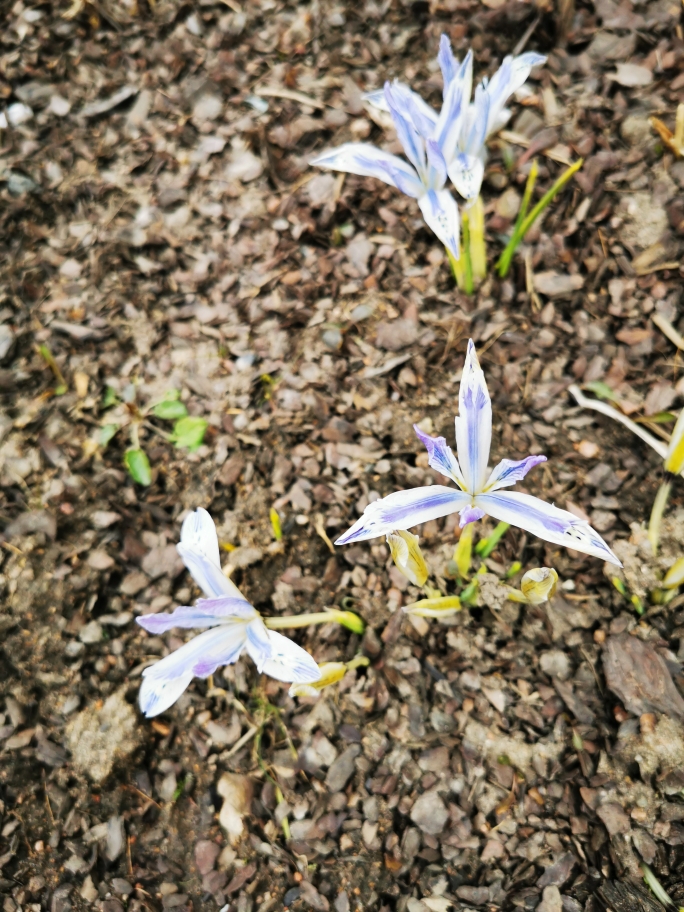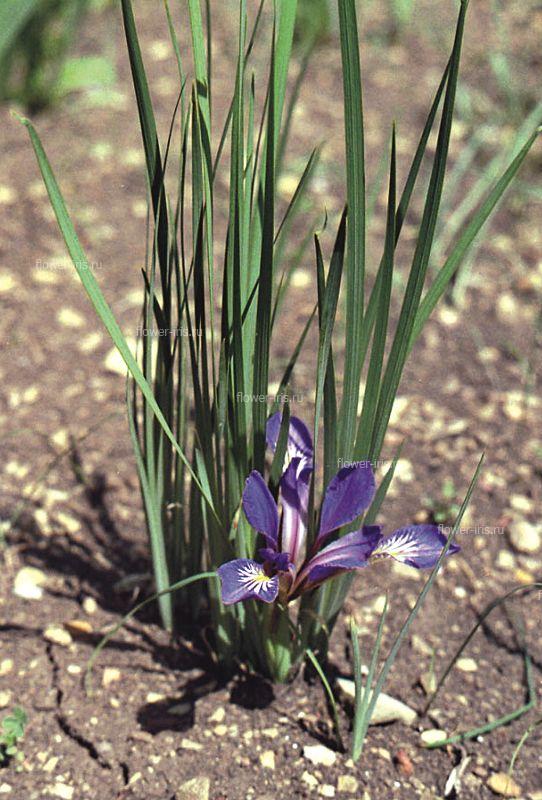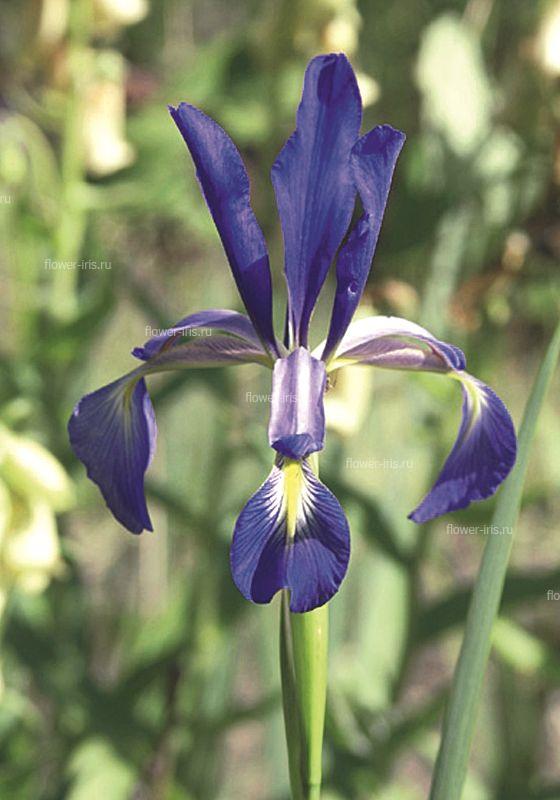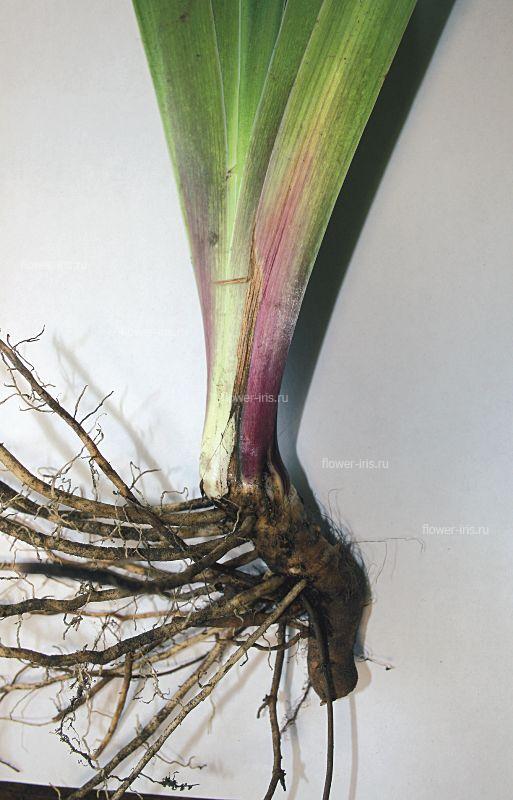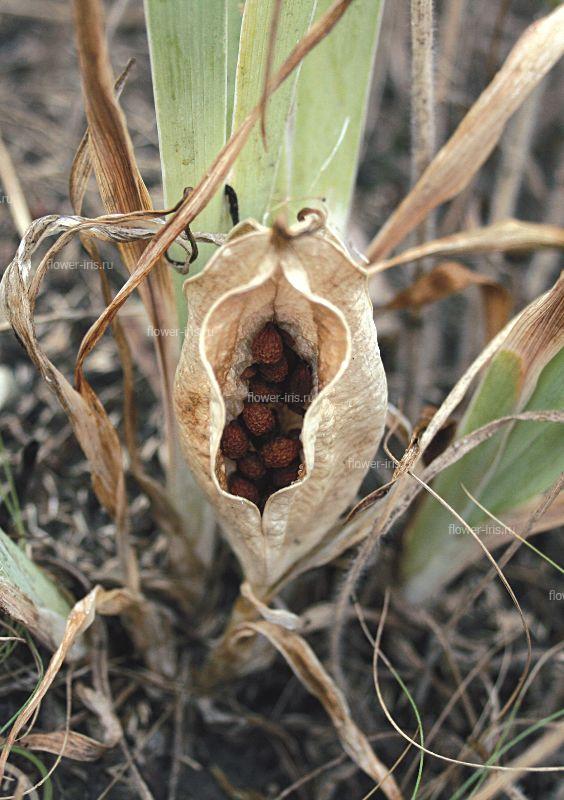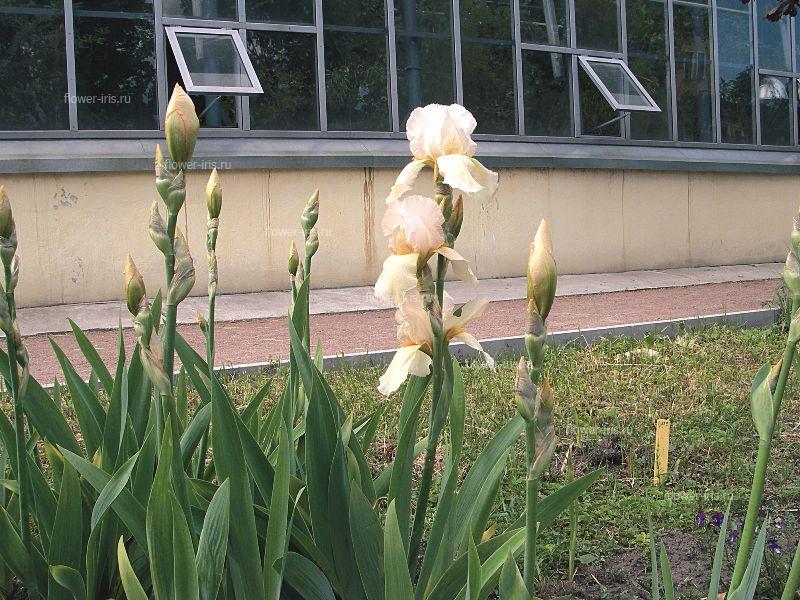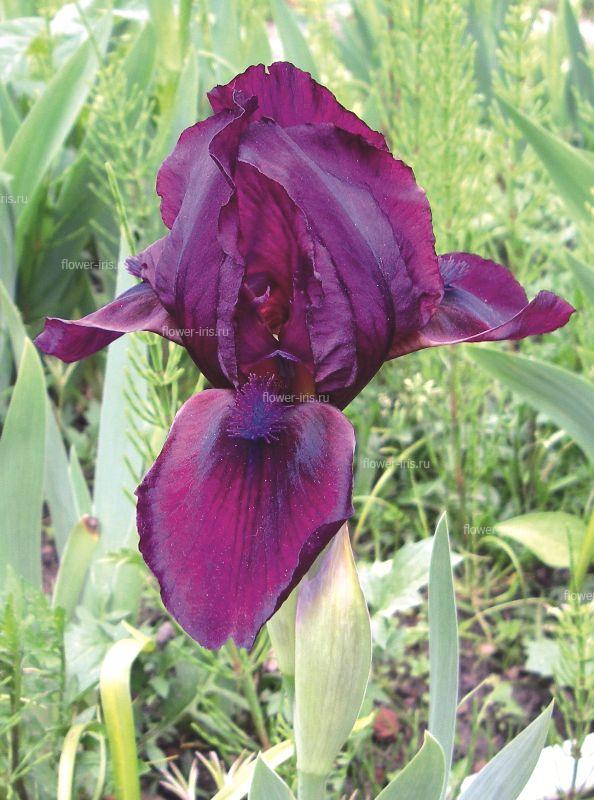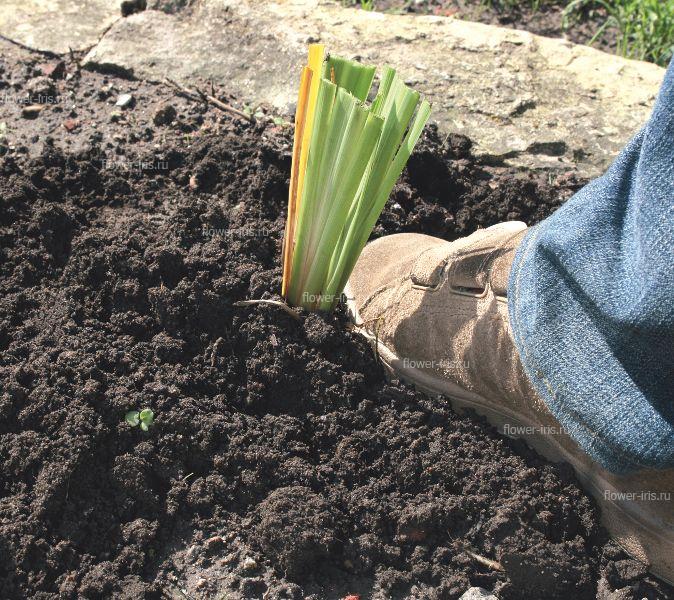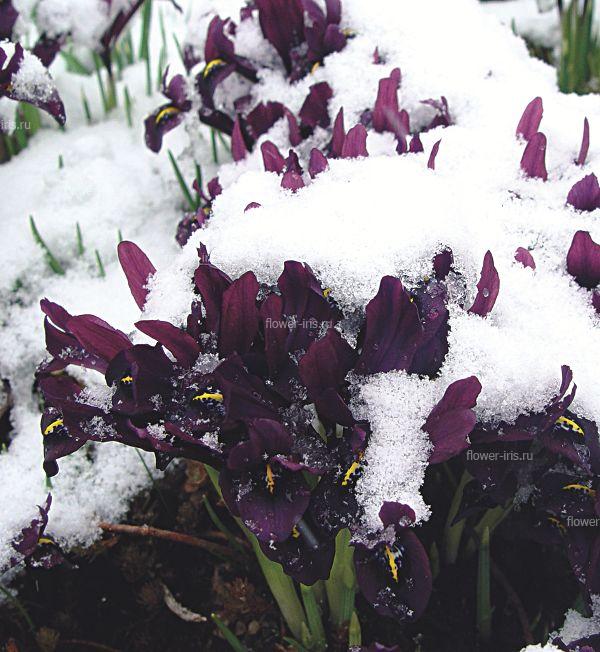|
News Camellian readings in St.Petersburg Photo Gallery |
Subgenus Limniris (Limniris) - Marsh, or living in lakes IrisHomepage → Books on Iridarium (Iris Garden) → Look in the book → Subgenus Limniris (Limniris) - Marsh, or living in lakes Iris
Introduction
Create iridariya Family Iridaceae Bulbotubers Bulbous Rhizomatous Genus Iris Subgenus Iris Subgenus Limniris Subgenus Eremiris Subgenus Xyridion Subgenus Tenuifolia Genus Pardanthopsis The exhibition "Iris Russia" Exposure Iris garden Cultivate Insect Pests and diseases of Irises Literature The translation is done through the service translate.google.com. Rhizome branching, short-or dlinnopolzuchee forming loose or dense tufts, in the remains of leaf sheaths. Leaves linear, ensiform, soft or hard, sometimes with prominent veins, dorozhchatye. Flowers plain, could be on the outer veins perianth lobes. The inner and outer perianth lobes are not always equally developed. Outer perianth lobes deprived barbs - strips of thick hairs, so for them a nickname - beardless irises. Capsule cylindrical or spherical. Seeds are spherical or pear-shaped, with or without arillyusa arillusopodobnym appendage in seed seam smooth. In subgenus Limniris more than 45 species. They grow in North America, Asia, Europe and the Mediterranean coast of North Africa. Many of them have long been cultivated in gardens, and are involved in the selection. In the Leningrad region grows only 2 species, and both of this subgenus - k Siberian (I. sibirica) and k yellow (I. pseudacorus). The collection has been tested more than 30 species, including species of the North American flora. K. ring (I. innominata), Douglas K. (I. douglasiana), because zolotistolistny (I. crysophylla), since strong (I. tenax) - from the Pacific coast. K. burozhelty (I. fulva) and k shortness (I. brevicaulis) - from the state of Louisiana, with the lower river. Mississippi. The plants were grown in a cool greenhouse. Two species were planted on Iridarii. One of them, because shortness, spent the winter, blooming and fruiting, the other, because the brown-yellow, spent the winter without shelter, perfectly vegetate, but not blooming. Another view - because dlinnolepestkovy (I. longipetala), which grows in California, winters without shelter, flowers, not fruit. Feature of it is that the unbranched inflorescence contains 3 or more flowers. They, as well as other species of the subgenus, hydrophilic, so often prizrastayut on flood, forest edges and along rivers and lakes. There are many varieties of domestic and foreign selection. All of them feel at home on the North-West of Russia. Iridarii grown on more than 20 species and subspecies of the subgenus Limniris, however, for the general introduction of the North-West of Russia is of interest to 12 species. They form a powerful group of decorative foliage, suitable for decoration borders, ponds, soliternyh landings and rocky hills. Of interest for cutting. Many stems rising above the foliage of the xiphoid, permanent flowering of 2-3 weeks to a month. Section Limniris (Limniris). Rhizome branching, short-or dlinnopolzuchee forming loose or dense tufts, in the remains of leaf sheaths. Leaves linear, ensiform, soft or hard, sometimes with prominent veins, dorozhchatye. Flowers plain, could be on the outer veins perianth lobes. The inner and outer perianth lobes are not always equally developed. Capsule cylindrical or obtusely triangular, usually with no nose. Seeds are spherical or pear-shaped, without arillyusa. I. bulleyana Dykes - K. Bulleya. Korotkovetvistoe rhizome, forming a dense turf. Leaves are linear, long-pointed, 15-45 cm long., 0.5-1 cm wide. Stems cylindrical, 20-35 cm long. The flowers are small, light blue, with a grid of darker veins, alternating with short blond oblong spots and smears. Capsule triangular, short, cylindrical. Seeds maroon-brown, flattened plane. It occurs in wet mountain meadows, with adequate moisture (flow humidification), rocky slopes, often on steep banks of mountain rivers in China in the provinces of Sichuan, Yunnan and Tibet, at an altitude of 2300-3500 meters above sea level. m Flowers in June, fruits in late August - early September. I. chrisographes Dykes - K. hrizografes or gold-painted. Korotkovetvistoe rhizome, forming a dense turf. The leaves are gray-green, linear, long-acuminate, 25-70 cm long., 0.5-1.2 mm wide. Stems cylindrical, hollow, 25-50 cm long., Mostly below the leaves. Velvet flowers, dark purple, the outer perianth lobes - golden-yellow stripes. Capsule triangular, cylindrical at the base - rounded at the tip - sharp. Seeds maroon-brown, flattened plane. It occurs in wet mountain meadows, rocky slopes or on the edge of the forest, in China, in the provinces of Sichuan, Guizhou, Yunnan and Tibet, at an altitude of 1200-4400 meters above sea level. m flowers in late June and early July, fruiting in August-September. I. forrestii Dykes - K. Forrest. Korotkovetvistoe rhizome, forming a dense turf. The leaves are green, linear, long-acuminate, 20-50 cm long., 4-7 mm wide. Stems 15-45 cm long. Flowers are yellow. Capsule oblong-elliptical, with six ribs. The seeds are light gray, flat flattened. It occurs in wet mountain meadows, with adequate moisture (flow humidification), rocky slopes, often on steep banks of mountain rivers in China, in the provinces of Sichuan, Yunnan and Tibet, at an altitude of 2750-3600 meters above sea level. m Flowers in June. Fruiting in August. I. ensata Thunb. - C. xiphoid. Rhizome korotkovetvistoe of tightly pressed against each other short branches. Ensiform leaves, gradually tapering to an end, 50-70 (90) long., 10-18 mm wide., Thin, light green, with a sharply exude midrib, the base (especially the end of vegetation) reddish-purple, short peduncle . Peduncles 70-85 cm long. The flowers are large in a number of grades (spread-eagle flower up to 20-23 cm in diameter.), Dark red-purple, with a bright yellow longitudinal stripe on the outer perianth lobes. Capsule elliptic. The seeds are almost round, light brown, flat flattened. Far the widespread view. Growing in Russia in Yakutia (near the village. Amga, Tommot), in the Far East Amur region., Southwest of Khabarovsk Krai, Primorsky Krai, the Kuril Islands (Kunashir). Outside of Russia - in the North-East China, Korea and Japan. It grows in elevated areas of floodplain meadows, woodlands with well-drained soil and herbage-grass meadows. Landslide is a favorite place beams on the southern slopes of woodlands. Here - in fresh, did not manage overgrown with sedges, well-drained alluvial soils, heavy wet flow-through water reaches its optimal development. Blooms in July. Fruits in late August and early September. I. laevigata Fisch. SA et Mey. - K. smooth. Rhizome korotkovetvistoe of tightly pressed against each other short branches. The leaves are pale green, with slightly prominent midrib, the base reddish purple, 70-80 cm long., 20-30 (40) mm wide. equal to or higher than the peduncle. Stems 70-90 cm long. Flowers large, intensely blue (sometimes reddish-purple), 8-9 (10) cm in diameter. On the outer perianth lobes - the bright yellow eye. Capsule oblong, the walls are covered in purple and scarlet mesh veins. Seeds flat flattened, dark brown. View, widespread in Russia in Eastern Siberia, Primorye, Fr. Sakhalin and Kunashir and outside Russia - in Eastern Mongolia, Northeast China, and Japan. Forms thickets on moist meadows, sometimes in the water on the shores of lakes and rivers, grassy marshes. Blooms in June and July. Fruits in late August and early September. I. maackii Maxim. - K. Maaka. Rhizome creeping, branched, forming loose clumps. Ensiform leaves, without the express midrib, more than 70 cm high., 20-30 mm wide. The stem is round in cross section, the top branched, many-flowered. The flowers are delicate, yellow, 5 to 5.5 cm in diameter. Capsule cylindrical elongated, almost round, apex suddenly drawn in thicker corpus cusp. Seeds compressed, brown, shiny. Far form shown numerous populations occurring in Russia at the border area. The southern part of Sakhalin Island in Russia. North-eastern China. Rare, having retired grows on coastal meadows and marshes. Blooms in June. Fruit in late July-early August. I. pseudacorus L. - K. yellow. Rhizome creeping, branched, forming loose clumps. The leaves are green, broadly, with distinct midrib, 70-90 (120) cm., 20-25 (35) mm wide. Peduncle 70-90 (120) cm. The flowers are large, golden-yellow, 10 to 11 cm in diameter. Capsule large, oblong-oval, with a short beak. Seeds semicircular in outline, slightly compressed, light or dark brown, with loose skin. European-Caucasian species, widespread in our country and outside Russia. He has a wide range of middle taiga to subtropical areas in Europe, the Caucasus, Western Siberia, North Africa and Asia Minor. The shallow waters of rivers, lakes and swamps. The rhizome is usually submerged in water, the leaves and stalks are located above the water. Blooms in June and mid-July. Fruits in late August and early September. I. sanguinea Donn ex Hornem. - K. blood red. Korotkovetvistoe rhizome, forming a dense turf, covered usually reddish remnants of old leaves. Leaves linear, non-rigid, in the early growing season - reddish, with distinct midrib, 42-50 cm long., 6-8 mm wide. Stems 55-80 cm long. The flowers are blue or blue-purple, diam. 6-8 cm Box podolgovato-oval. Seeds dark brown, flattened plane. Siberian and Far Eastern species, widespread in Russia - East Siberia, Primorye, and beyond - in the North-East China, Japan, Mongolia, Korea. On floodplain wet meadows, edges of deciduous forests with dwarf birch. Blooms in June. Fruiting in September. I. setosa Pall. ex Link - K. bristle. Korotkovetvistoe rhizome, forming a loose sod. Ensiform leaves at the base of red-purple, light green, broad, slightly blunt the ends, 40-55 cm long., 22-28 mm wide. Peduncles 48-82 cm long., Branched. Flowers from light blue to dark blue color, 7.4-9.4 cm in diameter. Inner perianth lobes are underdeveloped. Capsule inflated, rounded-triangular, 1.4-2.1 cm in diameter, 2.9-4.2 cm long. Boxes greatly inflated. Seeds slightly flattened, dark brown. It is widely distributed in this country and outside of Russia. The East-North American species. In Russia, Central and Eastern Siberia, the Russian Far East. Outside Russia, Japan, Northeast China, Korea, North America (the foreland of Alaska, Aleutian Islands). Mainly grows on dry and wet meadows, in birch, on the banks of ponds and peat bogs of northern taiga to subtropical, in open areas and in the undergrowth. Featuring a high frost resistance, goes beyond all other species of the family Iridaceae north (beyond the Arctic Circle). Blooms in June. Fruit in late July and in August. I. sibirica L. - K. Siberian. Korotkovetvistoe rhizome, forming a dense turf. Leaves are linear, long-acuminate, 50-80 cm long., 6-8 (10) mm wide. Stems cylindrical, hollow, 60-100 cm long., Mostly well above the leaves, is, as a rule, 3-5 flowers. The flowers are pale or dark-purple-blue. Capsule triangular, short, oblong-oval, longer than the width of 1.5-2 times. The seeds are light gray, flat flattened. Eurasian species, widespread in Russia - from the taiga to the warm temperate zone of Europe, the Caucasus, Western and Central Siberia and outside Russia - Armenia, Kazakhstan, Central Asia. It grows in floodplains, wetlands and forest meadows, birch groves, forest edges. Blooms in June. Fruit in late July and in August. Section Ioniris (Ioniris). Rhizome thin, elongated, branched, creeping along the surface, forming a loose or dense sod, cover up the remains of leaf sheaths. Stem short or almost absent, 1-flowered, very simple, the same form on both sides, almost naked. External and internal perianth lobes more or less made the same way. Leaves flat, ensiform, narrow. Ovary triangular devoid furrows. Capsule globose, 3 -, 6-sided, opened three divergent flaps. Seeds are spherical or pear-shaped, with a whitish arillusopodobnym appendage in seed seam. Species of the section are common in our country and outside Russia. In Russia grows in the southern regions of Siberia and the Far East. Outside of Russia - in the Romanian Carpathians, in the North-East of Central Asia, in the north-western Mongolia, China and the Korea Peninsula. Iris is a favorite habitat of tinned slopes steppe meadows, birch, sparse deciduous and mixed forests. On Iridarii grown since Russian (I. ruthenica) and k single-flowered (I. uniflora). I. ruthenica Ker-Gawl. - K. Russian. Rhizome thin, elongated, threadlike, crawling on the surface, forming a loose curtain. Leaves linear-lanceolate, 30-50 cm long., 4-6 mm wide., Sharply exude the central vein, lodging. Peduncle up to 12 cm in height. The flowers are small, blue or pale purple, rarely white, with a delicate flavor. Capsule globose-oval. Seeds are shiny, brownish. Widespread in our country and outside Russia, mainly Asian appearance. In Russia, native to the southern regions of West, Central and East Siberia. Outside of Russia - Central Asia (north-east), in the North-West Mongolia and China. Disjunctively, after a long break - in the Romanian Carpathians. Grows in the birch forests, sparse deciduous and mixed forests, grassing slopes, steppe meadows warm temperate zones, sometimes comes in the southern part of the mountainous areas, where it occurs in the alpine meadows at an altitude of 3000-3500 meters above sea level. m flowers in May. Fruit in late June - early July. I. uniflora Pall. ex Link - K. single-flowered. Rhizome thin, elongated, threadlike, crawling on the surface, forming a loose curtain. The leaves are long stem, light green, non-rigid, linear, 15-50 cm long., And 3-10 mm wide. Peduncles slender, 8-20 cm long. Single flower on top of the stem, blue-purple, darker at the end. Capsule oval, almost spherical. Seeds globose or slightly compressed, with both sides are light brown with a little fringed prisemyannikom. It is widely distributed in this country and outside of Russia, Siberia and the Far East look. In Russia - East Siberia (Dauria), the Far East. Outside Russia - Mongolia, China, Korea Peninsula. Grows on dry stony and open grassy slopes, pine forests, belobereznikah, oak woodlands, bleached deciduous forests. Blooms in early June. Fruits in July. |


 Eng
Eng

